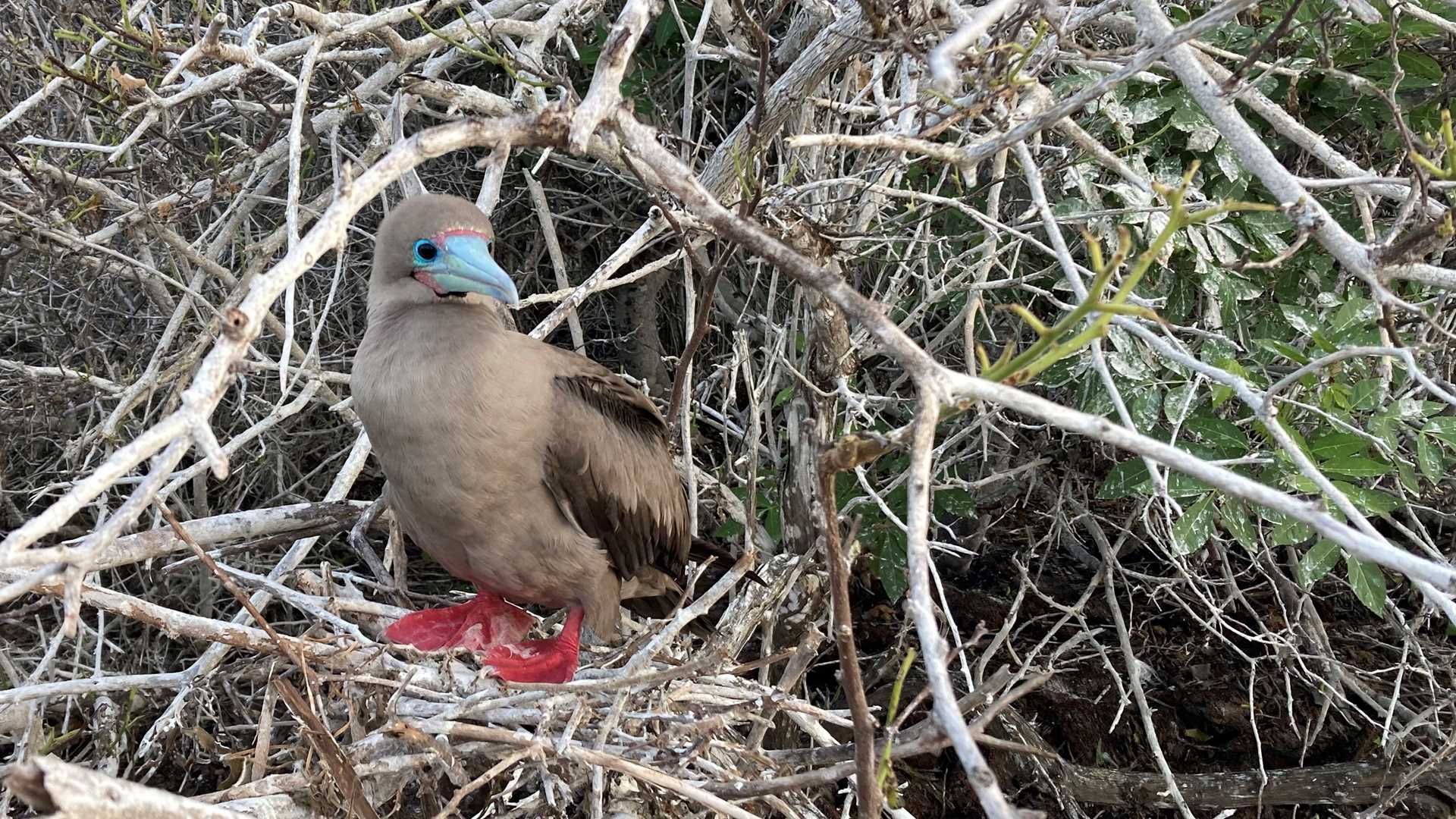One of the most incredible islands of the Galapagos archipelago is Genovesa or Tower. It is located in the northern hemisphere, and it is home to over a million birds. This island is far from the central islands and the underwater Galapagos platform. This particularity could be the reason that land reptiles never arrived to the island, as it is impossible to find lava lizards or land iguanas here. Therefore, this island is not appealing to Galapagos hawks (the top predator of the archipelago), one reason why the birds do not inhabit this island.
We left Santiago Island behind. Early in the morning, we crossed equator from the south. With the first beams of sun shining down, I led a group of eager kayakers along the base of the steep cliffs inside the sunken caldera of Darwin Bay. We had a marvelous experience during which we saw red-footed boobies and frigatebirds gliding kite-like. As we paddled, we observed storm petrels, sea lions, seagulls, and a large school of eagle rays as they came close to the kayaks.
After breakfast, the sun came out. We made a wet landing on a small coral beach. The number of seabirds nesting and flying in this area amazed us. We observed frigatebirds and red-footed boobies in their nests in the low shrubs. In the air, frigates and boobies soared on the constant breeze. On the beach, sea lions lounged on the sand and in the waves. Walking along the trail, we approached the mangrove area. The fluffy chicks were delightful. From the top of the bushes, male frigatebirds made their unmistakable sounds to show us their happiness after a female accepted them. They proceeded to embrace one another following an elaborate ritual, a very common sight when observing seabirds around the world. After the beach, we came back onboard to prepare for deep water snorkeling. It was sunny, and the ocean was warmer than usual. Swimming along the cliffs, we observed colorful fish and fur sea lions. Our guests recognized many of the more common species of fish, like king angels, yellow-tailed razors, Moorish idols, large-banded blennies, rainbow wrasses, and blue-chinned parrotfish, among others.
Later in the afternoon, we led our guests up steep and rustic steps and across the point of the island. We were in search of petrels and short-eared owls, the top predators of the island due to the lack of Galapagos hawks. We identified the large ground finch and the unique sharp-billed ground finch as they fed on dry seeds along the lava rocks. On the bushes, we admired the fluffy baby frigates in their nests and the much larger juvenile Nazca boobies. Out on the flat lava flow, storm petrels swooped around before disappearing into their nest holes. We found a well-camouflaged short-eared owl that was busy hunting these petrels. One of the most interesting parts of our hike occurred when we spotted a huge Galapagos centipede among the rocks. This endemic insect is a good example of the gigantism of species in the archipelago.
It was late when we returned to National Geographic Islander. The sunset was magnificent. It was possible to observe Marchena Island to the west and a flock of red-footed boobies returning to Genovesa. What an incredible day here in this natural paradise called Galapagos.







